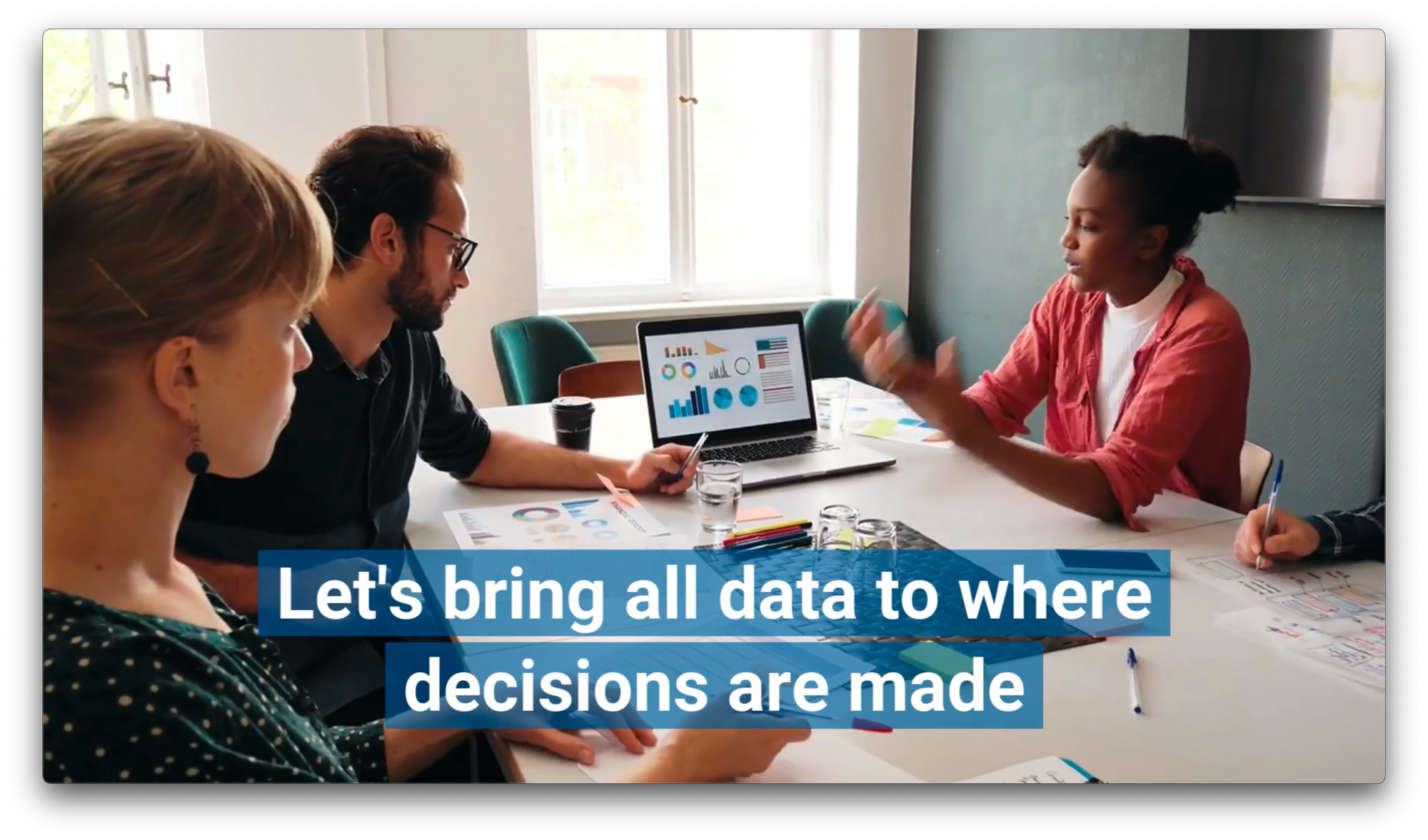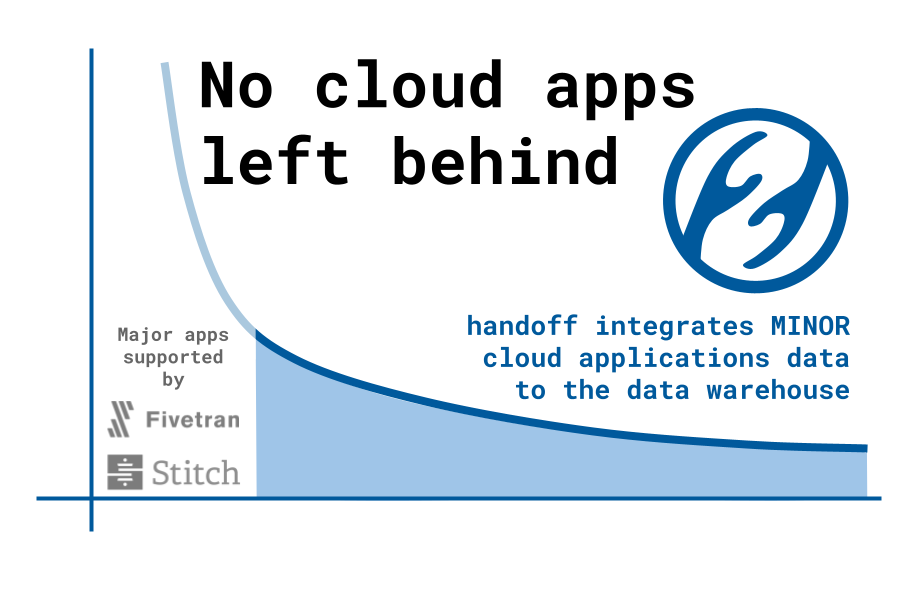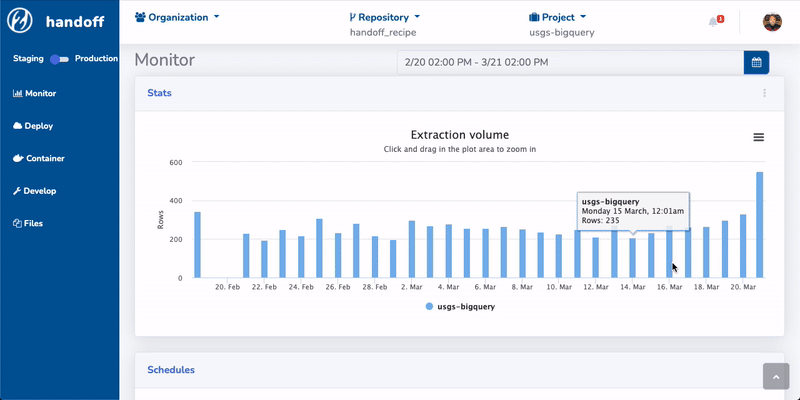How I Built a Profitable Data Integration Business Without a Sales Team
How I built a profitable data integration platform without a sales team. Learn how scalable ETL pipelines, AWS Fargate, and open-source tools fueled growth.

Introduction
In 2017, I took a leap of faith. Leaving behind a structured career in data science and software engineering, I started my own consulting business, Anelen Co., LLC. The goal was clear: to gain more control over my time, prioritize my family, and build something sustainable. I never imagined this decision would result in Handoff.cloud, a data integration platform managing 150 pipelines and processing millions of rows daily—all without a dedicated sales team.
In this post, I’ll share my journey from consulting to building a scalable product, the challenges I faced, and the lessons I learned about business, technology, and growth.
Handoff.cloud: 1 minute introduction video
How Consulting Led to a Scalable Data Integration Business
When I first started consulting, I was primarily helping startups and mid-sized companies build analytics infrastructure and data pipelines. Working as a data scientist at a Y Combinator startup gave me a strong foundation in data modeling, A/B testing, and customer analytics. Through my venture capital connections, I was introduced to startups that needed help structuring their data. My first client struggled with fragmented data across multiple sources, which I helped unify.
What I quickly realized was that many companies struggled with data integration—not just moving data, but tailoring the extraction and transformation process to their specific needs. Existing tools like Fivetran and Stitch Data were great for common use cases but lacked flexibility for niche cloud applications with proprietary APIs. My consulting work often involved writing custom Python scripts to fill these gaps.
One of my earliest clients was a fast-growing SaaS startup that needed to integrate customer data across multiple systems, but they couldn’t justify hiring a full-time data engineer. They were losing valuable insights due to fragmented data. I built a tailored ETL solution for them, and within weeks, they had automated reports that previously took hours to compile manually. When I saw how quickly my work transformed their operations, I realized this was a widespread challenge.
By 2020, I had built so many variations of these solutions that I recognized a pattern. The market needed a productized service—one that could provide custom data pipelines quickly, efficiently, and at a fraction of the cost of hiring a full-time data engineer. That’s when the idea for the service business was born.
I saw an opportunity beyond one-off consulting projects. The real gap wasn’t just building pipelines—it was supporting businesses that needed tailored, cost-effective solutions for niche data integrations. The challenge now was turning this insight into a scalable service that could meet the needs of companies that didn't fit into traditional ETL molds.
Identifying a Market Gap in Data Engineering
The COVID-19 pandemic in early 2020 created a unique opportunity. As we entered a quarantine period in early 2020, my consulting work slowed significantly. I was concerned that without face-to-face meetings, I would struggle to acquire new clients. All I could do was to focus on what I controlled: delivering good work to the existing customers. The slow down allowed me to refine my approach, turning scattered scripts into a scalable platform. As my consulting work evolved into a service, I identified three key challenges that businesses frequently faced with data integration:
- Integrating Proprietary API Endpoints – Many SaaS products don’t have pre-built connectors in mainstream ETL tools, forcing companies to either build their own pipelines or manually extract data. Handoff.cloud solved this by offering rapid custom integrations.
- Column-Level Customization – Many clients didn’t just need raw data; they needed specific transformations applied before ingestion. I designed the platform to allow for deep customization at the column level, giving businesses exactly what they needed.
- Reverse ETL for Actionable Insights – Instead of just extracting data, many companies needed to push transformed data back into operational systems. Handoff.cloud provided an efficient way to move insights from a data warehouse into CRMs, billing platforms, and other tools.
A "long tail" in cloud apps and APIs: Many specialized, niche SaaS applications and proprietary APIs are often ignored by large data integration platforms. Most major ETL solutions focus on mainstream applications like Salesforce, Google Analytics, and Snowflake. For instance, a fintech startup may use a custom-built API that mainstream tools don’t support, making integration difficult. But there’s a huge ecosystem of industry-specific tools—custom CRMs, vertical SaaS platforms, and operational databases unique to certain businesses—that aren’t covered by out-of-the-box solutions. These companies need custom integrations but lack the in-house expertise to build them efficiently.

Handoff.cloud thrives in this long tail. By focusing on niche integrations that larger ETL tools neglect, we provide tailored solutions to businesses that would otherwise struggle with fragmented data. Whether it’s a fintech startup needing a custom financial API integration or a logistics firm dealing with an obscure warehouse management system, our approach ensures that no application is left out of the modern data stack.
One of my first Handoff.cloud users was a CEO who struggled with getting meaningful insights from customer usage data. They had reports, but they were static and always outdated. By integrating reverse ETL into their workflow, we enabled their sales team to act on fresh data in real time, identifying upsell opportunities as they emerged. It was at that moment I realized: data isn’t just about storage and reporting—it’s about driving business actions.
But solving these challenges at scale required a solid technical foundation. As more clients onboarded, I needed to make key architectural decisions to ensure Handoff.cloud remained efficient, cost-effective, and scalable without unnecessary complexity.
Key Architectural Decisions that Made Handoff.cloud Scalable
Building Handoff.cloud wasn’t just about solving business problems—it required making the right technical and architectural choices to create a scalable, cost-effective service. Three key technical decisions made Handoff.cloud sustainable and scalable:
- Choice of the computing platform
- Software design
- Strategic Open Source
Let's dive in.
Early on, I recognized a crucial pattern in client use cases: most businesses only needed periodic data updates, either daily or hourly. The demand for real-time or streaming integrations, while a compelling trend in data engineering, was often unnecessary and would introduce significant complexity and cost.
Real-time streaming architectures demand constant infrastructure management and higher operational expenses, requiring dedicated clusters running 24/7. That level of complexity didn’t align with my clients' actual needs. Instead, I opted for a periodic batch processing model, which was sufficient for the vast majority of use cases.
However, running batch jobs at set intervals led to another challenge: computational spikes. As the number of pipelines in the portfolio grew, these scheduled processes caused sharp bursts of resource consumption at fixed intervals, while leaving machines idle 90% of the time. To manage these peaks efficiently and avoid paying for unused capacity, I leveraged AWS Elastic Container Service (ECS) with Fargate. This serverless approach allowed Handoff.cloud to dynamically allocate computing resources only when needed, scaling up and down on demand. This choice eliminated the need to manage dedicated clusters per client and significantly reduced infrastructure costs, making it possible to scale the business efficiently with a small team—or even as a team of one.

Another critical decision was embracing open-source culture. My open-source project tap-rest-api, a general-purpose data extractor, played a critical role in shifting from a one-off consulting model to a sustainable service business. tap-rest-api could connect to most APIs with minimal configuration, significantly reducing the need for custom development. By standardizing on this tool and having clients agree to use it as a core component, I ensured that no single customer owned my code. Instead, I was able to reuse and refine extraction logic across multiple clients, increasing efficiency and maintaining a modular, reusable codebase.
This strategic shift—from custom one-off data pipelines to a repeatable service model—was fundamental in transforming my consulting practice into a scalable business. Rather than selling software licenses or handing over codebases, clients paid for the ETL service itself, shifting the revenue model from project-based consulting to recurring service fees.
These technical innovations—choosing batch over real-time where appropriate, leveraging serverless computing for cost efficiency, and embracing open-source tools—laid the foundation for Handoff.cloud’s success, enabling it to scale sustainably without the overhead of a traditional engineering team.
However, even the best technology doesn’t sell itself. Without a dedicated sales team, I needed a different approach to grow the business. Instead of relying on outbound sales, I leaned into relationships, word-of-mouth referrals, and a strategy that made Handoff.cloud indispensable to its users.
How I Grew a Data Engineering Business Without a Sales Team
Unlike most SaaS companies that invest heavily in sales and marketing, Handoff.cloud grew organically. Here’s how:
- Leveraging My Consulting Network – My first customers were companies I had previously worked with. They trusted me and were willing to test out the platform. As they saw the value, they continued using it.
- High-Touch, Low-Maintenance Model – Instead of chasing new leads, I focused on making the platform indispensable for existing clients. The goal was to integrate so seamlessly into their workflows that renewing the service was a no-brainer.
- Providing Speed and Personal Attention – Large platforms often take weeks to build new integrations. With Handoff.cloud, I could deliver a fully customized pipeline in days. This speed and flexibility became a key selling point.
- Letting Word-of-Mouth Do the Work – Happy clients referred others, allowing me to grow without a structured sales effort. Over time, this compounded into a stable revenue stream.
It was also about growing with the enterprise or startup customers. With every phase of their business growth, their data challenges expanded too. Because I built a good reputation with the above organic growth strategy, it was natural for existing clients to turn to Handoff.cloud when they discovered new data demands. The number of pipelines per client multiplied as a result.
Some of my startup clients were acquired or merged with other companies. When they discovered their new counterparts lacked a mature data stack, they recommended Handoff.cloud as the solution. These referrals helped expand my customer base without any outbound marketing efforts. I am grateful for the support I received from my loyal customers, who not only trusted my service but actively helped in its growth.
Their trust wasn’t just about renewing subscriptions; it was reflected in how they actively referred Handoff.cloud to other teams and even to sibling companies after mergers and acquisitions. Here are a few standout cases where Handoff.cloud helped businesses solve critical data challenges.
Real-World Examples: Case Studies of Scalable ETL Solutions
One of the biggest validations for Handoff.cloud came from real-world client successes. Here are a few cases that illustrate the impact of custom data integration:
Client 1: Scaling SaaS Analytics with Custom API Integration
A SaaS company developing a front-end rich text editor in a multi-cloud environment needed a way to extract detailed usage data from AWS CloudFront logs. Their existing solution was slow and required frequent manual intervention. By leveraging AWS Athena and integrating it with Google BigQuery through Handoff.cloud, we built a seamless, automated ETL pipeline. The result? High visibility into product usage, leading to improved customer insights and a stronger sales pitch to investors.
Client 2: Unlocking Growth Through Reverse ETL
A subscription-based B2B platform was sitting on a goldmine of data but lacked an efficient way to push insights back into their CRM. We implemented a reverse ETL solution that fed product usage metrics into their Salesforce instance. This allowed their sales team to identify upsell opportunities and proactively engage with high-value customers, increasing revenue retention.
Client 3: Rapid Column-Level Customization for a Niche Industry
A mid-sized fintech company needed to integrate multiple external financial APIs while ensuring that specific fields were formatted according to internal compliance standards. The flexibility of Handoff.cloud allowed us to deploy column-level customizations within a few days, something their in-house team estimated would take months. With faster integrations, they could launch new features quickly and maintain their competitive edge.
The Evolution of Handoff.cloud: From Bash Scripts to Scalable SaaS
Like many successful products, Handoff.cloud evolved through multiple stages. They are:
- Bash scripts
- Unified CLI
- Web application
Handoff.cloud started humbly, as a simple collection of bash scripts to manage AWS Fargate tasks. In the early days, I would manually trigger jobs and monitor their execution, but as the number of scripts grew, managing them became cumbersome. To bring structure to the chaos, I rewrote everything into a unified CLI (Command Line Interface) in Python. This new CLI streamlined operations—commands like handoff run local would execute the process on my development machine, while handoff cloud run dispatched the task to the cloud. Over time, I added features to manage project lifecycles, artifacts, logging, and alerting as the business matured. This CLI, now called Handoff Core, is open-sourced and forms the backbone of Handoff.cloud’s automation.
But despite the improvements, I found myself frustrated with constantly typing command-line arguments. Frustrated by the endless typing of command-line arguments, I decided to build a web application that would let me trigger processes with a single click. I started by wrapping the core CLI with a backend API layer, then built a frontend interface on top. Beyond making my workflow more efficient, the web application unlocked an unexpected advantage—it provided customers with a visual representation of their data ingestion pipelines. By incorporating dashboards that showed ingestion volume and job status, I enhanced the observability of data operations, making it easier for clients to grasp the value Handoff.cloud was providing.

These incremental but meaningful evolutions—going from bash scripts to a unified CLI, and from a CLI to a fully functional web application—allowed Handoff.cloud to transition from a set of ad-hoc scripts to a polished, scalable service platform.
While Handoff.cloud has been stable and profitable, I see opportunities to improve and expand. My next steps include:
- Rethinking the Architecture for Greater Efficiency – As more clients onboard, refining how customizations are implemented will improve scalability.
- Expanding Beyond a One-Person Operation – While I’ve enjoyed the independence, bringing on additional engineering and customer support resources would allow for faster growth.
- Exploring New Marketing Channels – Since most growth has been organic, I’m experimenting with more structured outreach to find new clients who would benefit from the service.
This journey has been one of continuous learning and adaptation. From a set of scattered scripts to a fully operational platform, each stage of evolution has reinforced the importance of staying agile and customer-focused. Looking ahead, I see even more opportunities to refine, expand, and improve the platform while maintaining what made it successful in the first place.
Lessons Learned and What’s Next for Handoff.cloud
When I first started, I had no idea that a handful of scripts would grow into a business managing 150+ pipelines and processing millions of rows of data every day. What started as an attempt to build a sustainable career for myself turned into a service that businesses rely on for their most critical data workflows.
Looking back, it’s clear that success wasn’t about having the perfect plan from the start. It was about solving real problems, refining the approach over time, and trusting that consistency would yield results.
I’m excited about what’s next for Handoff.cloud. If you’re a business leader looking for a customized data integration solution, let’s talk today. The best way to grow a business is to solve real problems—and I’d love to help solve yours!